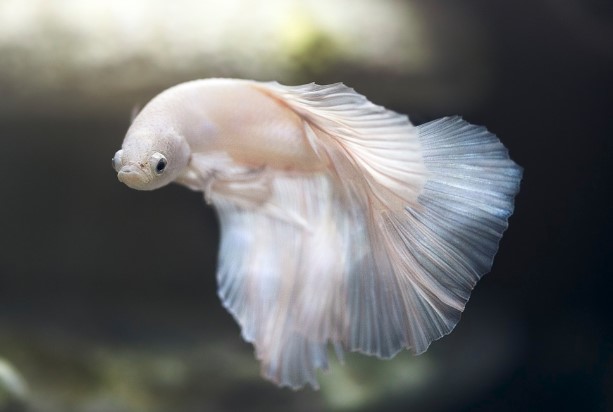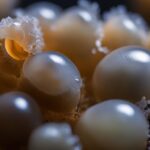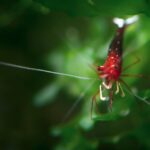Betta fish is territorial and aggressive, meaning that it is dangerous to “co-breed” them with other creatures, especially if you don’t have a large aquarium. Therefore, if you don’t have a spacious living room (or wherever you intend to keep the tank), you must get the appropriate snails and add them to your small Betta tank to give your home that breath-taking look you desire.
Aside from enhancing your apartment’s interior aesthetics, combining snails and betta comes with some biological benefits, as the snails keep the aquarium clean by checking the growth of algae and feasting on uneaten fish die, and they aerate the substrates.
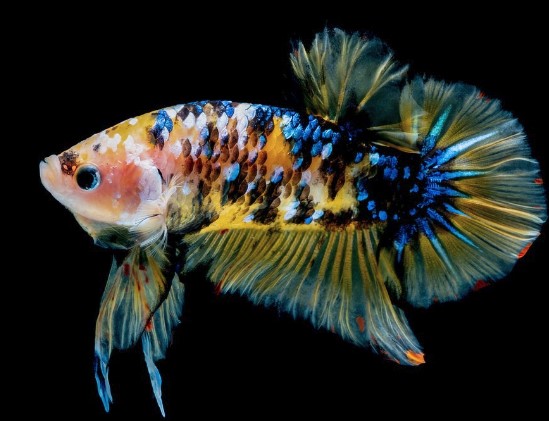
Make no mistake, the result will be abysmal if you don’t add the right snail species to your Betta tank. Sure, you will see that adverse outcome toward the end of this article, so just wait for it! That said, the next important thing to factor in is the size of the “small betta tank.” Because the size of your living room (assuming that’s where you intend to keep it) differs from the next reader’s living room, individual differences matter here.
But then, I will define “a small tank” as an aquarium with a 5-gallon capacity. The good thing is that I have used that before, and it worked perfectly. So, in this article, I will show you the 7 best snail for small betta tanks. Now, keep reading to learn from an experienced aquarist who knows what works and what doesn’t.
7 Best Snail for Small Betta Tank
These are the 7 best snails for a small betta tank
1. Nerite Snails (Neritina natalensis)
Originally from South Africa, Nerites rarely grow beyond one inch when they have fully developed into adulthood, making them perfect for small betta tanks. They have varieties like Zebra, Tiger, and Horned Nerites. These are great tank buddies for bettas, so you should consider giving it a shot if you have a small tank.
The benefits of having Nerites are chiefly being easy to breed and maintain, and they clean up the debris (algae and dead plant matter) for you. It is also worth noting that Nerites won’t eat your living plants if you are growing plants in your aquarium.
The downside is that Nerites are small, so chances are that the bettas may munch on them. Don’t sweat it though because bettas cannot eat the adult Nerites. Another issue you have to worry about is that they escape easily. Therefore, ensure your tank has a lid.
2. Ramshorn Snail (planorbarius corneus)
Because Ramshorn grows between 0.25 and 1 inch, they made good playmates when I paired them with my bettas. However, I made sure I kept my water pH at 6.5 and 8 to keep them growing. Plus, studies show that they do well when they are in an aquarium of 22 to 28 degrees Celsius.
Once I achieved all that, I introduced up to 6 Ramshorn snails in my 5-gallon tank. The benefit of breeding the Ramshorn is that they are colorful (red, green, pink, brown, yellow, etc.), so they will improve the aesthetics of your aquarium and home. Additionally, you can breed a few of them simultaneously in a small tank – like I did.
Not to mention that the omnivorous creatures will guzzle your algae and dead plant matter. Because they love to breathe air, they can creep up to the top of your tank and escape; it is a cause for concern. Again, their population explodes rapidly if you overfeed them.
3. Ivory Snails (Brachypodium sylvaticum)
Despite having up to 2-inch size, you can add up to 5 Ivories in a 5-gallon tank. However, keep your water pH between 6.5 and 8, and a temperature of 15 to 30 degrees Celsius is the most appropriate for them. Ivories have a lifespan of about two years – this is a plus.
They often have whitish shells and bodies. And as well-known scavengers, you can be sure they will eat algae, dead plant matter, and uneaten fish diet. Another reason you should opt for the Ivories is, you can easily tend to them. It goes without saying that they are compatible with bettas.
Nonetheless, this species is too sensitive to water changes and may die once you change water without taking precautions. Therefore, you should acclimate them slowly when you add them to your tank and maintain their ideal pH and temperature.
4. Mystery Snails (Pomacea bridgesii)
No doubt, Mystery snails will make your fish friendly tank mates because they have cool personalities. Although the Mystery snails can live in tanks that are way bigger than 5 gallons, you can put them in your 5-gallon tank without hassles and worries.
The good thing about this species is that they will help you to clean your aquarium by eating algae and dead plant matter. Caution: Because they move a lot, ensure your tank has a lid. Also, they are easy to tend to because they grow up to 2 inches. Still, it is compatible with male and female bettas. On the flip side, they don’t have charming looks.
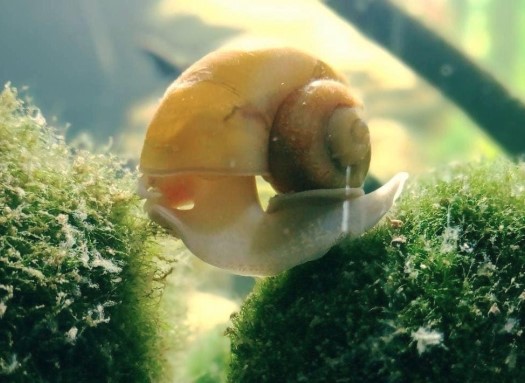
Also, if you have a tank less than 5 gallons, Mysteries may not give you the best outcomes because they introduce vast waste and bio-load in the tank. Put simply, you can only keep one Mystery snail in a 5-gallon tank and feed it calcium-rich food to grow its shell.
5. Pond Snails (lymnaea stagnalis)
Furthermore, when I found that Pond snails had a lifespan of up to 2 years, I concluded that it was worth giving a try. Yes, I have personally bred Ponds in my 5-gallon tank for over one year now, so I have so much to tell you about them. In fact, I had up to 3 Ponds at the time, measuring about 1 – 2 inches.
However, ensure that your water pH is 6.5 to 8 and your aquarium is between 15 and 30 degrees Celsius. As scavengers, Ponds will help you to eat algae, uneaten fish food, and dead plant matter, thus cleaning the tank at all times. They are also easy to take care of.
My only concern was that they overpopulate at an alarming rate, making me rid my tank of Pond snails every now and then. To add insult to injury, they lay jelly-like eggs on the glass tank – something I didn’t like. They tend to lay many eggs when they overfeed, so moderating their feeding.
6. Japanese Trapdoor Snails (Cipangopaludina japonica)
Considering that Japanese Trapdoors have a maximum of a 2-inch size, I tried breeding them in my small betta tank, and everything panned out well. They come in various colors, such as green, dark brown, white, golden, etc. Sure, this makes your aquarium beautiful.
On top of that, they eat algae and dead plant matter, thereby helping to keep your aquarium clean. When they sense danger, they retreat to their shells to protect themselves; that’s one of the reasons why I love to pair them with aggressive bettas. The demerit, on the other hand, is that they multiply at a high rate when you combine the male and female species.
Therefore, avoid that. They also love to wander about, so ensure your tank has a lid.
7. Rabbit Snails (tylomelania zemis)
Rabbits are so-called because they have antenna that look like those of a rabbit. Much as small sizes of Rabbits exist, the biggest one I have seen is 5 inches. Despite that, you can still grow them alongside bettas in a small tank of 5-gallon capacity.
To get the most out of it, keep your water pH between 7.2 and 7.8 and temperature 24 to 30 degrees Celsius. As a hobbyist, you will enjoy breeding Rabbits with your fish as it is fascinating to watch them harmoniously cohabit. Another benefit is that the Rabbits can stay for up to 3 years. Not to mention that they feed on algae and dead plant matter.
Plus, it slowly reproduces, so you shouldn’t expect a population explosion. Also known as Sulawesi snails, Rabbits can tidy up the milieu pretty fast (because they feed on algae and dead plant matter) and break them down into nutrients for aquatic plants. The downside is, given the size, the most appropriate tank for breeding Rabbits should be 20 gallons.
Conclusion
To wrap up, I have shown you the 7 best snails for small betta tanks. Like I promised, avoid adding to your tank Pest snails (they reproduce a lot and have no operculum for protection), Apple snails (they are likely to eat weak betta fish and ideal for 20-gallon tanks), and Malaysian Trumpet snails (they have exposed heads that make them bettas’ preys).
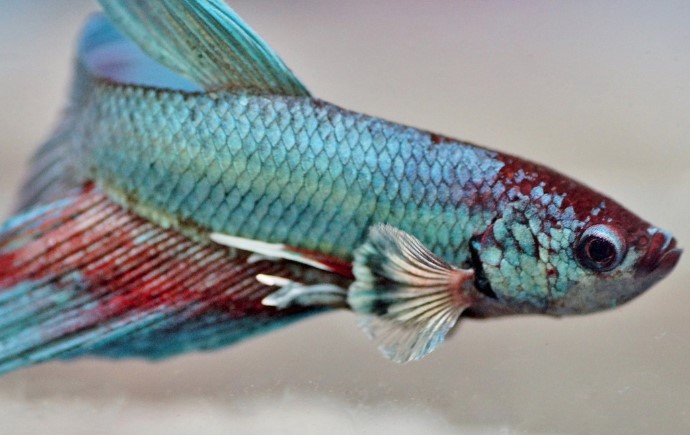
Yes, I tried it and the outcome was a disaster! Moving on, even though there are betta tanks as small as a 3-gallon capacity out there, I don’t think you should go for anything less than a 5-gallon tank if you wish to combine the two creatures (fish and snails). Many beginners often make that mistake, forgetting that bettas are territorial and aggressive.
Do you think I omitted any snail species that perform well in a small betta tank? If so, please feel free to share your experience with me now.
If you have a larger tank, things a slightly different, so check out our article for these tanks here.

